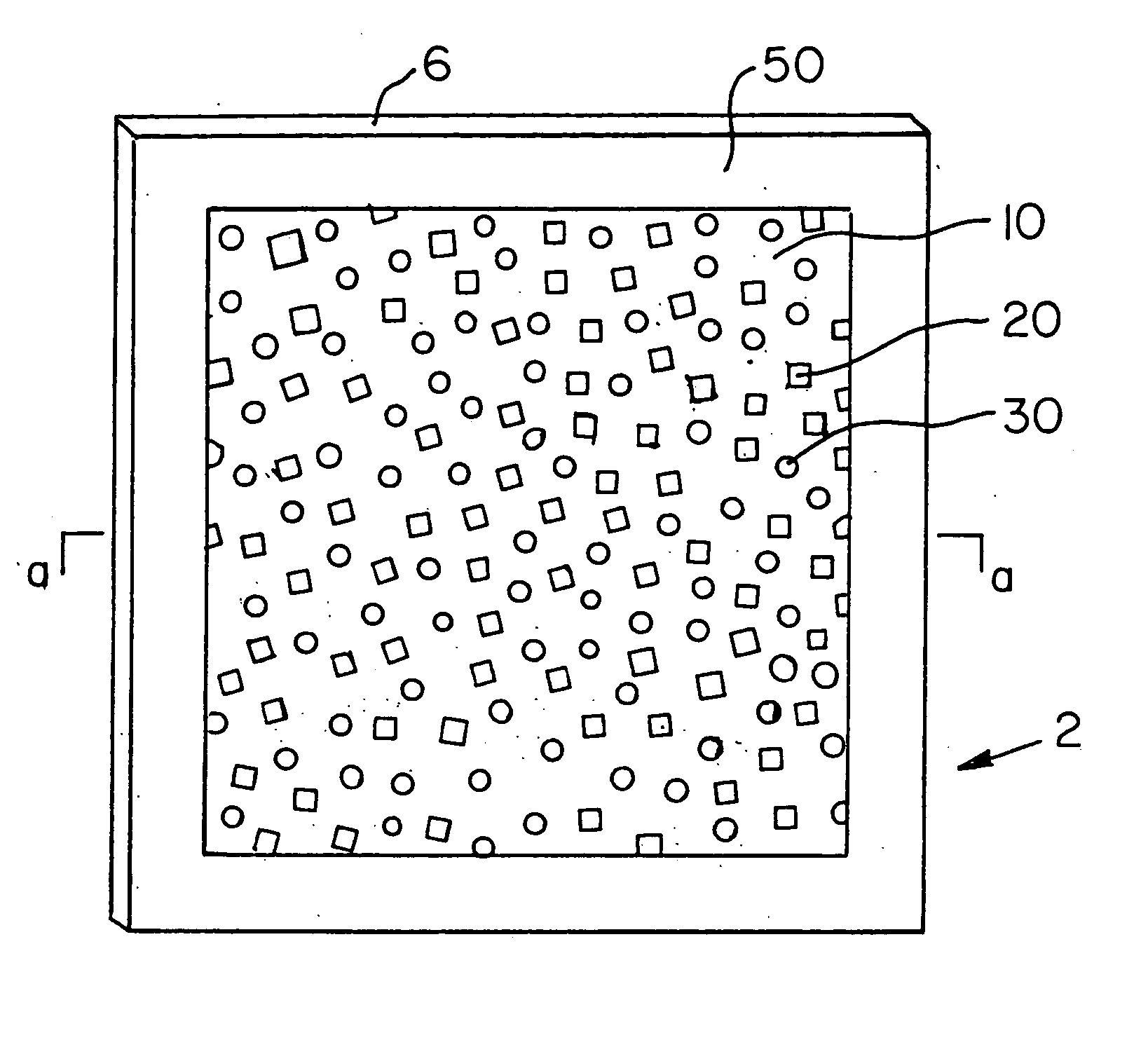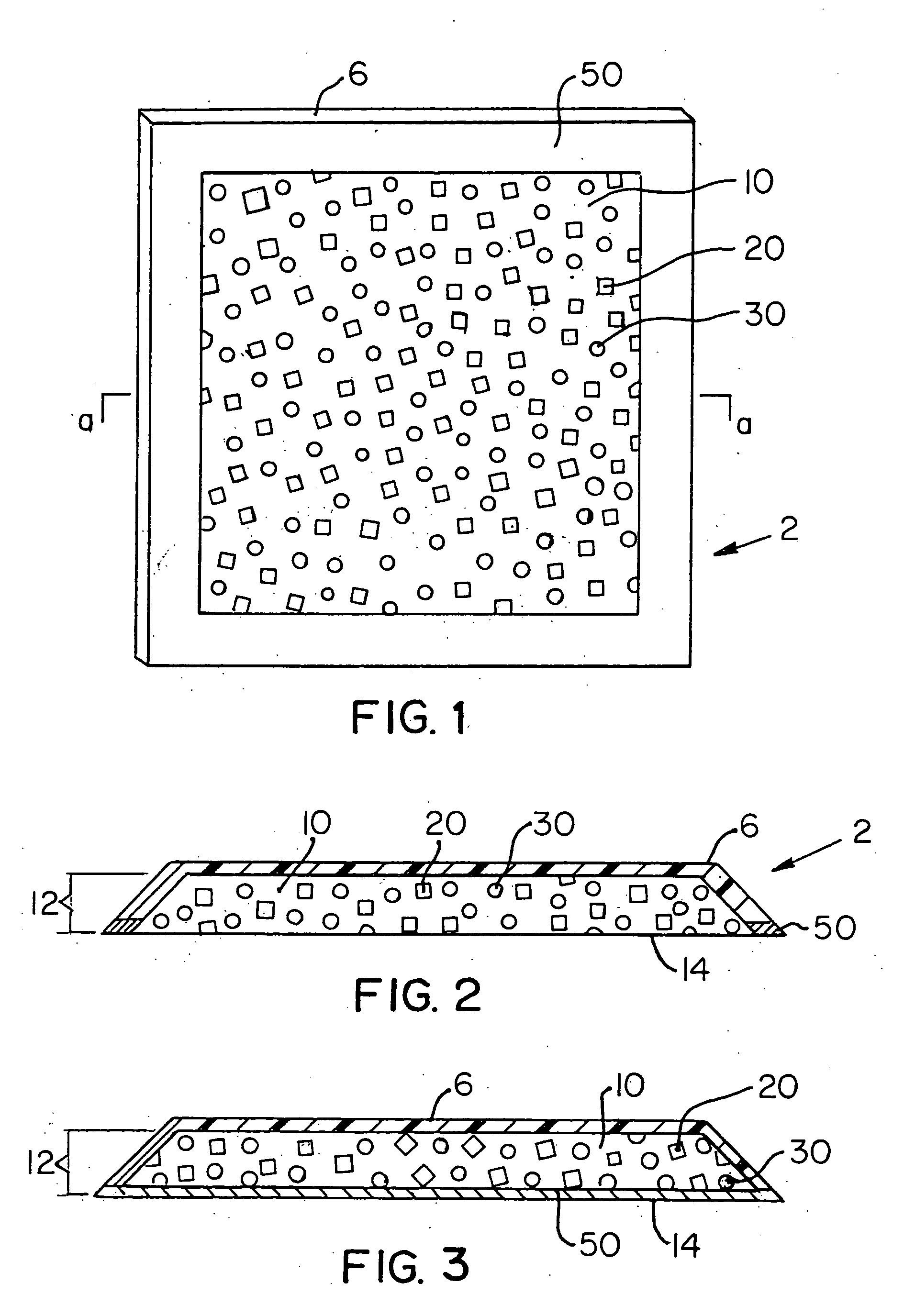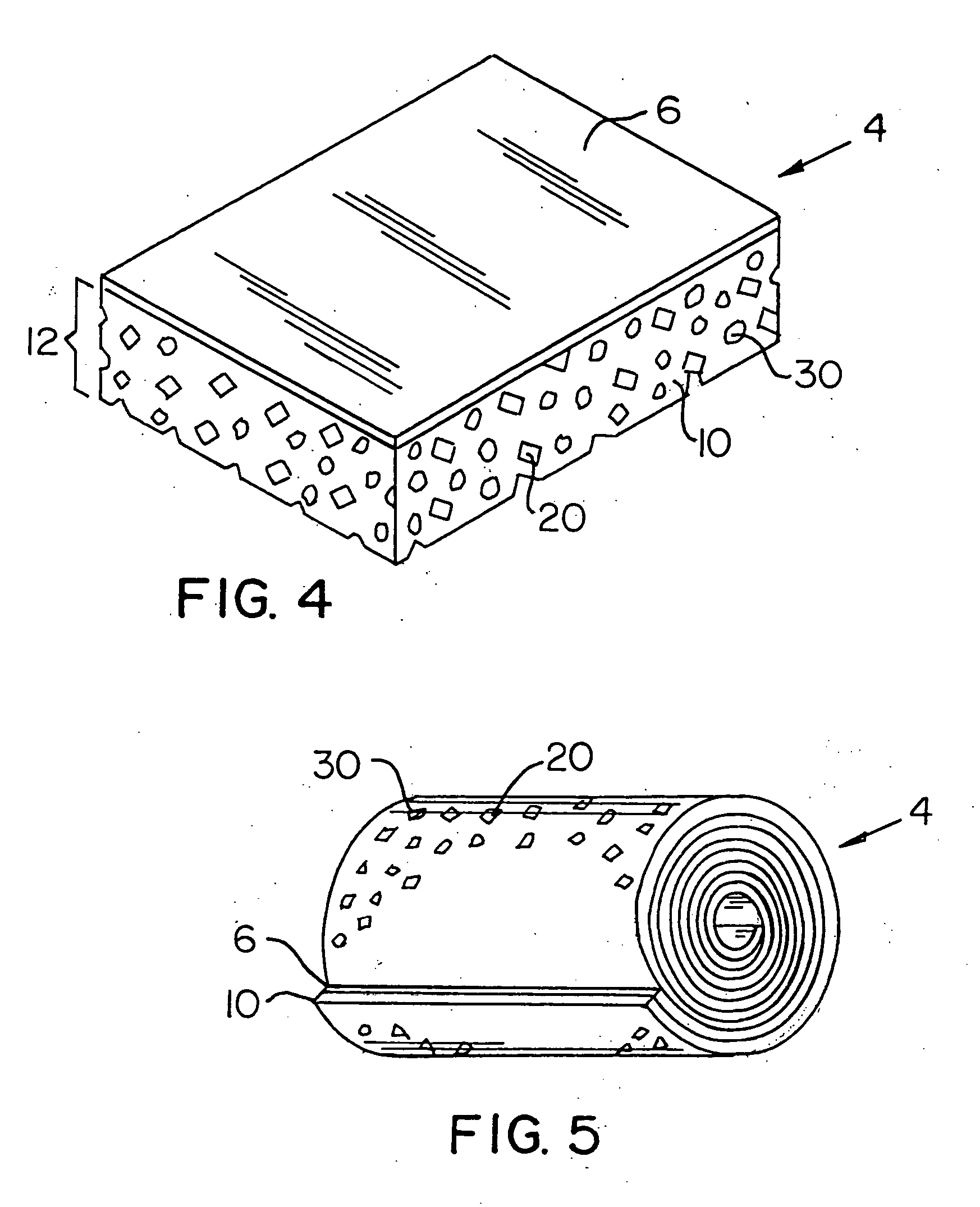Wound dressing
a wound and gauze technology, applied in the field of wound dressings, can solve the problems of affecting wound healing, affecting patient mobility, and imposing limitations on patient mobility,
- Summary
- Abstract
- Description
- Claims
- Application Information
AI Technical Summary
Benefits of technology
Problems solved by technology
Method used
Image
Examples
example 1
[0053] As shown in FIG. 6, a 64 year old male with Type II diabetes had a necrotic toe amputated. The wound did not heal for over eight months. The patient was scheduled for a below the knee amputation. The patient sought out the medical services of the inventor, had the wound debrided and the osteomyelitis associated with necrotic tissue removed. The inventor packed the wound with the gauze of the present invention as experimental treatment. As shown in FIG. 7, after five months of gauze treatment, the wound was healed.
example 2
[0054] As shown in FIG. 8, a 25 year old male in good health crashed his motorcycle and sustained a 3rd degree burn of his lower calf. He was told he needed a skin graft and would be off of his feet for seven weeks, which the patient could not afford. The patient sought out the medical services of the inventor who cleaned the wound and applied the gauze of the present invention. Within two days the patient was able to walk. FIG. 9 was taken roughly two weeks into the experimental treatment. With continued treatment, the skin became healthy with no pigment change, no pain, and no limitation of motion.
example 3
[0055] As shown in FIG. 10, a female patient presented with a third degree and fourth degree burn to the buttock area that would not respond to conventional treatment. As shown in FIGS. 11 and 12, within weeks of experimental treatment with the present invention, the treated area had healed significantly with minimal scarring and without loss of pigmentation.
PUM
 Login to View More
Login to View More Abstract
Description
Claims
Application Information
 Login to View More
Login to View More - R&D
- Intellectual Property
- Life Sciences
- Materials
- Tech Scout
- Unparalleled Data Quality
- Higher Quality Content
- 60% Fewer Hallucinations
Browse by: Latest US Patents, China's latest patents, Technical Efficacy Thesaurus, Application Domain, Technology Topic, Popular Technical Reports.
© 2025 PatSnap. All rights reserved.Legal|Privacy policy|Modern Slavery Act Transparency Statement|Sitemap|About US| Contact US: help@patsnap.com



